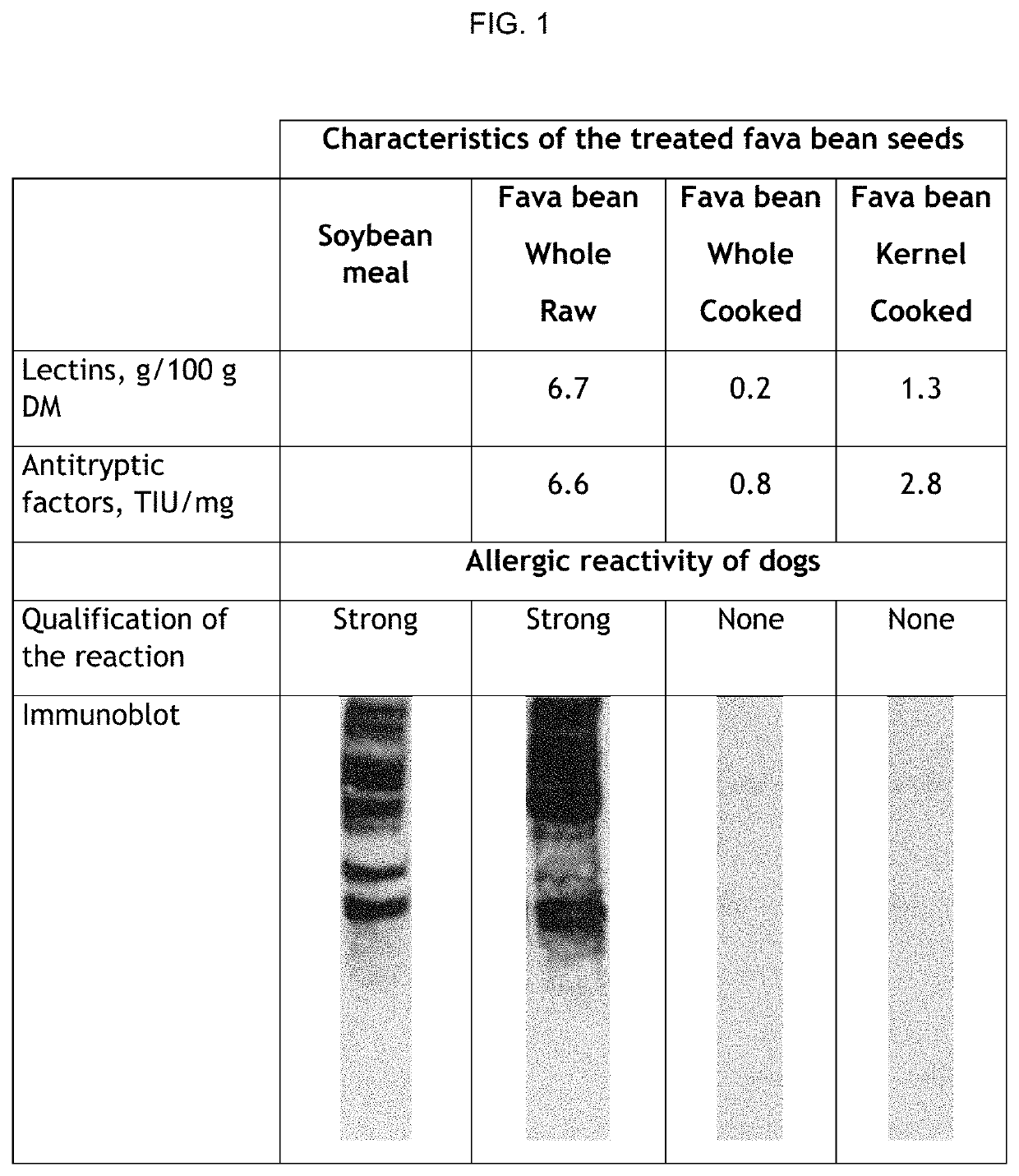Method for treating high-protein grains with a view to improving the use thereof as food
a high-protein grain and food technology, applied in the field of high-protein grain treatment with a view to improving the use of it as food, to achieve the effect of improving the nutritional value of the seeds
- Summary
- Abstract
- Description
- Claims
- Application Information
AI Technical Summary
Benefits of technology
Problems solved by technology
Method used
Image
Examples
Embodiment Construction
[0193]In support of the present invention, digestibility tests on target monogastric species were carried out, among which chicken, rooster, pig and fish were selected.
[0194]The assessment was based on:[0195]the use of energy, which is based on different approaches depending on the species: Metabolizable energy in poultry (ME), digestive utilization coefficient (DUC) of energy in pigs, apparent digestive utilization coefficient (DUCa) of energy in fish;[0196]the use of protein, which is based on the determination of the digestive utilization coefficient of the protein.
[0197]Zootechnical production performance tests on the same species, namely chicken, laying hens, pigs and fish, were also carried out.
[0198]In this case, the aim is either to show superior growth and / or laying performance, or to check whether the growth and / or laying performance is identical to that of the control, provided that the nutritional values of the solution resulting from the invention are those derived from...
PUM
 Login to View More
Login to View More Abstract
Description
Claims
Application Information
 Login to View More
Login to View More - R&D
- Intellectual Property
- Life Sciences
- Materials
- Tech Scout
- Unparalleled Data Quality
- Higher Quality Content
- 60% Fewer Hallucinations
Browse by: Latest US Patents, China's latest patents, Technical Efficacy Thesaurus, Application Domain, Technology Topic, Popular Technical Reports.
© 2025 PatSnap. All rights reserved.Legal|Privacy policy|Modern Slavery Act Transparency Statement|Sitemap|About US| Contact US: help@patsnap.com

